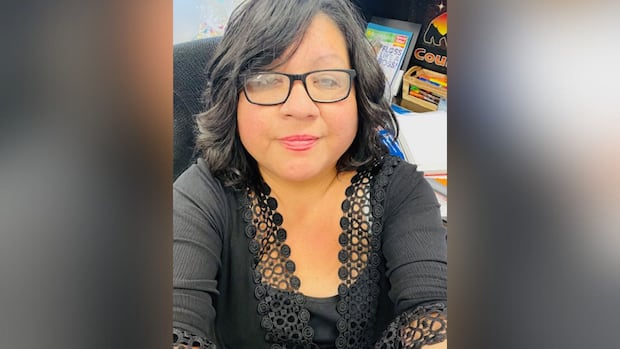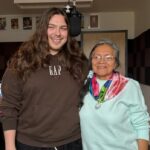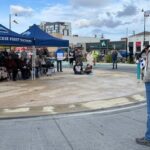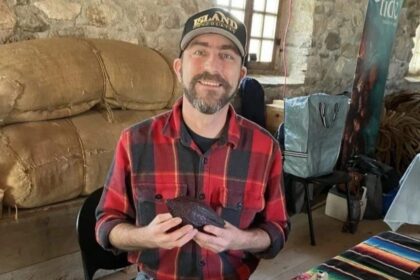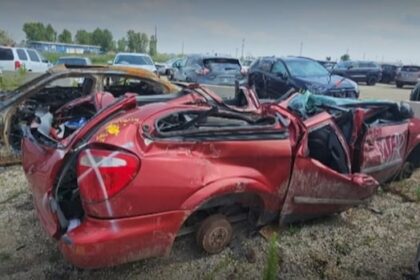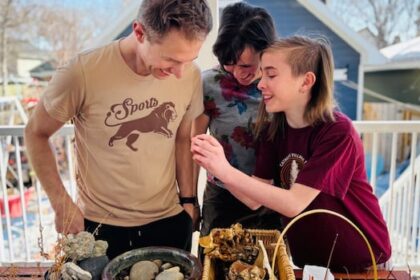SudburyA survivor of the deadly blastomycosis outbreak in Constance Lake First Nation talks about how it continues to haunt her four years laterJennifer Taylor was in intensive care after she contracted a fungal lung disease, mistaken for pneumoniaKate Rutherford · CBC News · Posted: Oct 24, 2025 6:00 AM EDT | Last Updated: 7 hours agoListen to this articleEstimated 5 minutesJennifer Taylor survived the outbreak of a fungal lung disease in Constance Lake First Nation but says physical, and psychological scars linger (submitted by Jennifer Taylor)Jennifer Taylor knew something was seriously wrong when she could no longer breathe lying down.The 50-year-old from Constance Lake First NAtion started feeling sick in November of 2021, and on the 12th went to hospital in Hearst.Having asthma, she knew the signs of pneumonia and thought that’s what she had, and a doctor gave her antibiotics telling her she would soon feel better.But she didn’t. Taylor went back to hospital, but was again sent home with antibiotics.”I was suffering so bad,” she remembered. “So one night, I decided to go back to the hospital again, but this time I said ‘I’m going to call an ambulance and maybe the doctor will take me more seriously if I went by ambulance.’ They gave me oxygen right away and, oh my Lord, it felt so good to be able to get some oxygen in my lungs.”But Taylor was sent home again, crying in frustration and gasping to breathe.Then, to her shock, she heard that three people in her community of 800— Luke Moore, Lorraine Shaganash and Lizzie Sutherland— had died. She knew all of them.Soon after, her sister called and told her to go back to the hospital to be re-assessed.By that time, doctors were aware that people were falling ill of a fungal lung disease called blastomycosis, which Taylor had never heard of before.It’s a naturally occurring illness and spread when people breathe in spores released from decaying plant matter combined with sewage and wet soil.By this time, Taylor said she was doesn’t remember much because she was fading in and out, but the next day she was airlifted to hospital in North Bay and admitted to the intensive care unit.While she was there, another member of Constance Lake First Nation, Mark Ferris, whom she knew, was admitted, but died a few days later.”I was getting scared and I said, ‘Oh, my God, am I next?’ You know, I was terrified,” she said. I coughed up so much phlegm. It was dark and it stank- Jennifer Taylor, Constance Lake First NationBut Taylor survived and spent more time on a regular ward in hospital doing physio, lung exercises and relearning how to walk in order to get back home.”I coughed up so much phlegm,” she said. “It was dark and it stank and I was coughing up cups and cups of that.”Eventually she did go home to Constance Lake, but her life was very different.To protect her fragile recovery, and because the Omicron variant of COVID was sweeping through the region, she kept her young children at home, and declined visitors.Her husband wore a mask to work and she herself wouldn’t go out without one.The anxiety continued to grip her, and altered her way of life.”I used to go into bush a lot with my husband, moose hunting, goose hunting, partridge hunting,” she said. “I was afraid to go into bush and everywhere I looked I thought blasto was here and blasto was there. Even riding along the highway in my vehicle. I said, ‘Oh, I wonder if blasto is there,’ like it was in my mind constantly for two years straight.”After six months, she returned to her job at the Jane Mattinas Health Centre working on health and wellness programs for others.Jennifer Taylor looks after health and wellness programming at the Jane Mattinas Health Centre in Constance Lake First Nation. She returned to work about six months after blastomycosis put her in intensive care. (Kate Rutherford/CBC)Gradually she tried to start living more normally, but knows her health is more vulnerable than ever.Taylor said she had a lung scan done not long ago and learned her left side is completely white from scarring.She is also saddened that she can’t tolerate smoke, either from ceremonial fires or traditional medicines.And she continues to wonder if the blastomycosis will come back.”It’s always there in the back of my head,” she said.Constance Lake First Nation falls within the coverage area of Northeastern Public Health.A spokesperson says there have been 19 other cases of blastomycosis in the district between 2022 and 2025, since the outbreak in Constance Lake.However communications specialist Gary Schelling says he can’t say whether those illnesses led to deaths or where the people became ill for fear of violating privacy legislation.An inquest continues into the circumstances surrounding the deaths of Luke Moore, Lorraine Shaganash, Lizzie Sutherland, Mark Ferris and Douglas Taylor during the outbreak.ABOUT THE AUTHORKate Rutherford is a CBC newsreader and reporter in Sudbury, covering northern Ontario. News tips can be sent to kate.rutherford@cbc.ca
Wednesday, 17 Dec 2025
Canada – The Illusion
Search
Have an existing account?
Sign In
© 2022 Foxiz News Network. Ruby Design Company. All Rights Reserved.
You May also Like
- More News:
- history
- Standing Bear Network
- John Gonzalez
- ᐊᔭᐦᑊ ayahp — It happened
- Creation
- Beneath the Water
- Olympic gold medal
- Jim Thorpe
- type O blood
- the bringer of life
- Raven
- Wás’agi
- NoiseCat
- 'Sugarcane'
- The rivers still sing
- ᑲᓂᐸᐏᐟ ᒪᐢᑿ
- ᐅᑳᐤ okâw — We remember
- ᐊᓂᓈᐯᐃᐧᐣ aninâpêwin — Truth
- This is what it means to be human.
- Nokoma


